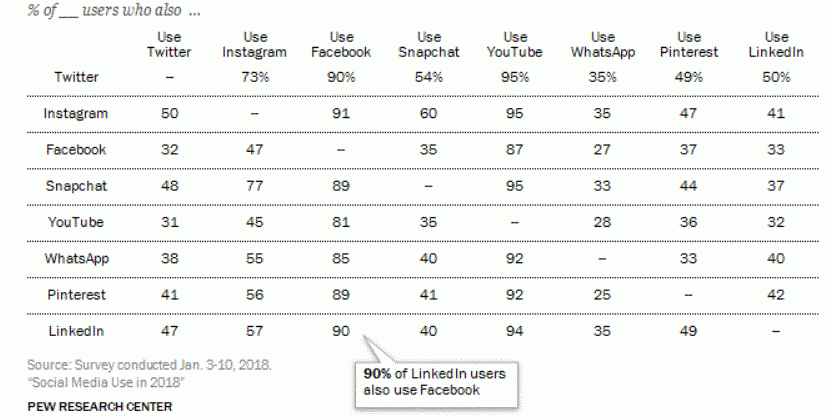The advent of the Web 2.0 brought the new concept of User Generated Content, which takes part in the social media [1]. Social media include social networking sites like Facebook and Twitter, photo sharing sites like Flickr, Video sharing sites like YouTube and business networking sites like LinkedIn.
Social Networking sites refer to web-based services that allow Internet users to create contents, build their own personal profile and connect with other users in the system [2]. Social media allow people to share their experience and feelings and communicate with others online. Furthermore, the growth of the high-speed Internet and, consequently, the convenient use of mobile devices made the social media to become popular among the Internet users [1]. Therefore, social media, especially social networking sites, have become a significant part of people’s daily life.
Aura will compete with some existing similar products and services like Facebook and Twitter. These social media already have a significant number of users and been accepted widely. For Aura, these successful social networking sites will be a big threat because they have occupied a large market share already. However, social media is still a potential market that demands some unique services to social media users, for example, sentiment analysis tools.
According to a report of Pew Research Center (2018), there is substantial ‘reciprocity’ between different social media sites. As shown in Table 1, 90% of Facebook users also post things on Twitter and LinkedIn; 95% of Snapchat users are on YouTube as well. Therefore, there seems to be no significant relationship between using different social networking sites. Facebook and Twitter users can also join Aura to explore new social media experience.

Source: Reference
What is sentiment analysis?
Sentiment analysis is “the task of finding the opinions of authors about specific entities”, and it can analyses “people’s sentiments, opinions, attitudes, emotions,etc., towards elements such as topics, products, individuals, organizations and services” [4]. This notion has become popular in the recent years because there is a significant amount of online information, especially on social networking sites like Twitter and Facebook [5].
Sentiment analysis is a technology resource valuable for companies that want to understand their customers’ based on comments and feedbacks of their products on social media [6]. It can also be a useful tool to conduct customers’ reviews of products and services. Candidates can be scrutinied by sentiment analysis of their social networking experience when applying for different positions [4]. Some organizations and governments that would like to know people’s opinions and attitudes will use it as well [5].
The whole generic sentiment analysis system is shown in Figure 1. It explains the working process of inputting a corpus of documents or texts to documents analysis and the outcomes [4]. In terms of document analysis, it consists of many different types of tasks, including sentiment classification, subjectivity classification, opinion summarization, opinion retrieval and sarcasm and irony identification.
Sentiment classification is one of the most important tasks that Aura will carry out. Sentiment classification is also named opinion orientation or semantic orientation, and its aim is analyzing the context of opinions from texts and measure the sentiment of the expression towards an entity [5]. This can be used to measure opinions and comments that are posted on social networking sites.
When a company releases a new product, for example, sentiment classification can measure people’s opinions that have been shared on social networking sites. According to results of sentiment classification, there will be a classification that measures the opinion of contexts, including positive, negative and neutral [5].
Normally, sentiment analysis works for business purpose, but Aura aims to explore its usage for customer-side. Aura can score users posts and their comments on social media. Users of Aura can integrate data from their social media accounts and combine with their answers on Aura tests and quizzes, so they can have their emotions evaluated and scored.

Source: Reference [4]
Reference
[1] Kaplan, A. and Haenlein, M. (2010). Users of the world, unite! The challenges and opportunities of Social Media. Business Horizons, 53(1), pp.59-68.
[2] Boyd, d. and Ellison, N. (2008). Social Network Sites: Definition, History, and Scholarship. Journal of Computer-Mediated Communication, 13(1), pp.210-230.
[3] Smith, A. and Anderson, M. (2018). Social Media Use in 2018. [online] Pew Research Center: Internet, Science & Tech. Available at: http://www.pewinternet.org/2018/03/01/social-media-use-in-2018/ [Accessed 5 Apr. 2018].
[4] Feldman, R. (2013). Techniques and Applications for Sentiment Analysis. Communications of the ACM, 56(4), p.82.
[5] Serrano-Guerrero, J., Olivas, J., Romero, F. and Herrera-Viedma, E. (2015). Sentiment analysis: A review and comparative analysis of web services. Information Sciences, 311, pp.18-38.
[6] Pak, A. and Paroubek, P. (2010). Twitter as a Corpus for Sentiment Analysis and Opinion Mining. Proceedings of the Seventh conference on International Language Resources and Evaluation, [online] 10, pp.19-21.

Pingback: The Business Model: Value Proposition – Aura